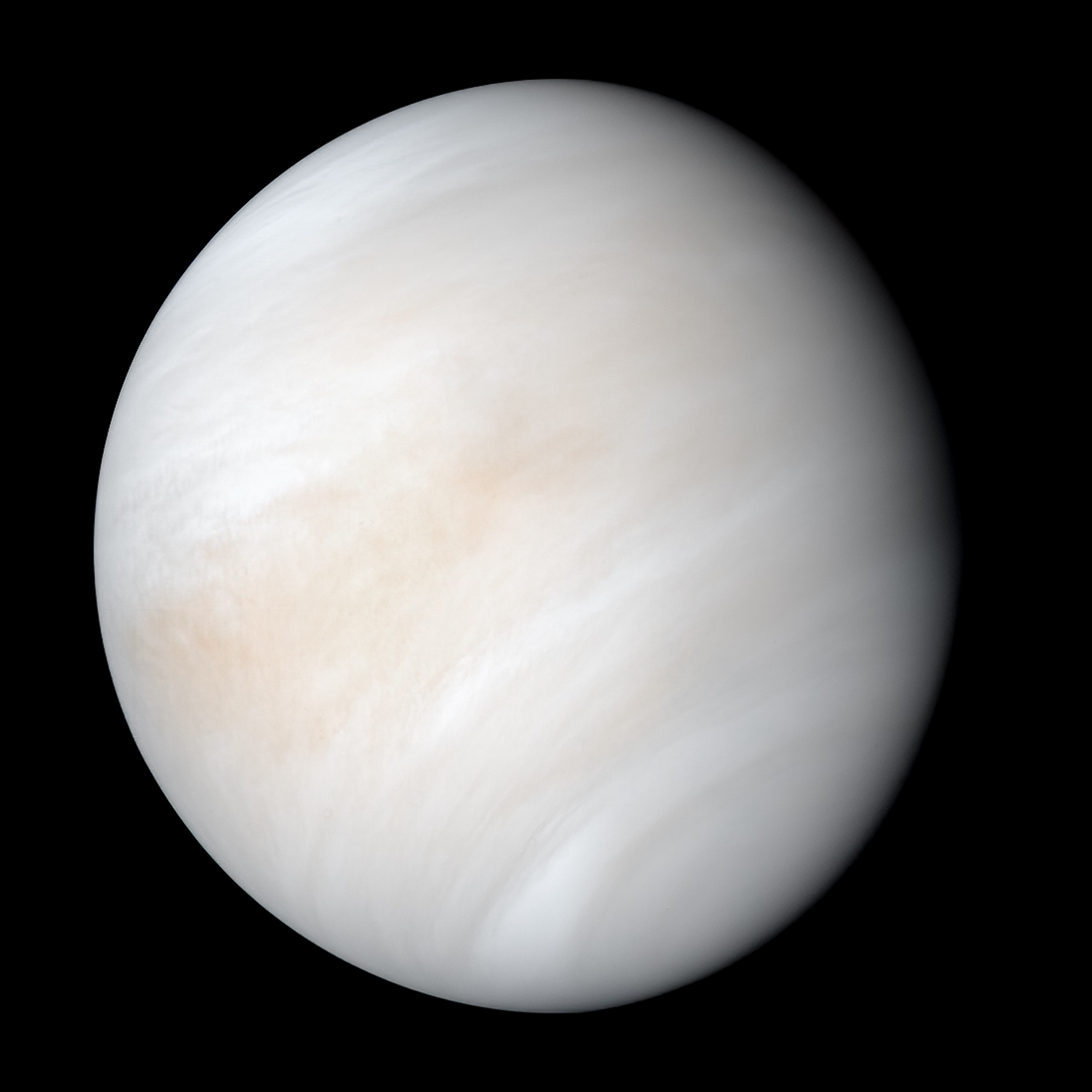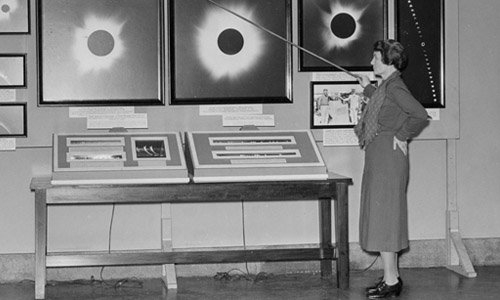Space News: Detection of Phosphine Molecules on Venus

Header Image: Photo taken of Venus by NASA’s Mariner 10 spacecraft in 1974. Image Credit: NASA/JPL-Caltech
Have you heard the news? On September 14, 2020, a scientific team through the Royal Astronomical Society announced the detection of phosphine molecules in clouds on Venus! This means Venus—the hottest, terrestrial planet in our solar system—is making headlines because phosphine is not so commonly found on planets other than Earth. Here’s what Adler Planetarium astronomers want you to know about this recent discovery.
What is phosphine?
Phosphine is a molecule made from one phosphorus atom and three hydrogen atoms. Normally, these atoms do not like combining, and it takes enormous amounts of energy and force to bring these atoms together.
Is phosphine an indication of life?
Possibly! On Earth, phosphine is produced by bacteria and microbes that don’t use oxygen as part of their biological processes. Phosphine can be detected in animal intestines, swamps, and bogs. What’s interesting is that even on Earth, we aren’t totally sure how phosphine is even produced, including which bacteria produce phosphine. It could be E coli, or it could be something else!
How was this phosphine on Venus detected?
The initial phosphine detection was made using the James Clerk Maxwell Telescope (Hilo, Hawaii), and then it was independently detected by the Atacama Large Millimeter/submillimeter Array (ALMA) located in northern Chile.
However, the phosphine detection itself isn’t totally confirmed. There may be potential background “contaminants” that could have affected the data.
Has phosphine been detected anywhere else in the solar system?
Actually, yes. In addition to being present on our planet, phosphine has been detected in the atmospheres of Jupiter and Saturn. However, in the case of these two planets, this detection is not necessarily an indicator of life. Phosphine can be created deep in the interiors of Jupiter and Saturn due to the enormous energies available there; then it is brought up into the atmosphere through the planet’s circulation patterns.
Compared to Jupiter and Saturn, Venus does not have enough enormous energies available in its atmosphere to create phosphine like those planets, which is partially why this recent detection is so interesting. The conditions are just not the same.
Is this detection a slam-dunk indicator of life on Venus?
No. The team isn’t claiming to have found life on Venus. While known non-biological processes have been ruled out as a possible source, and one source of this phosphine could be life located in the clouds on Venus, it has not yet been ruled out that this detection could be an indicator of an exotic non-biological chemistry process that we don’t understand just yet.
You can watch a special Q&A episode of Adler Astronomy Live featuring two of the scientists that helped write the paper about this phosphine detection on Venus. Or watch Sky Observers Hangout to learn how you can view Venus in our morning fall skies!







